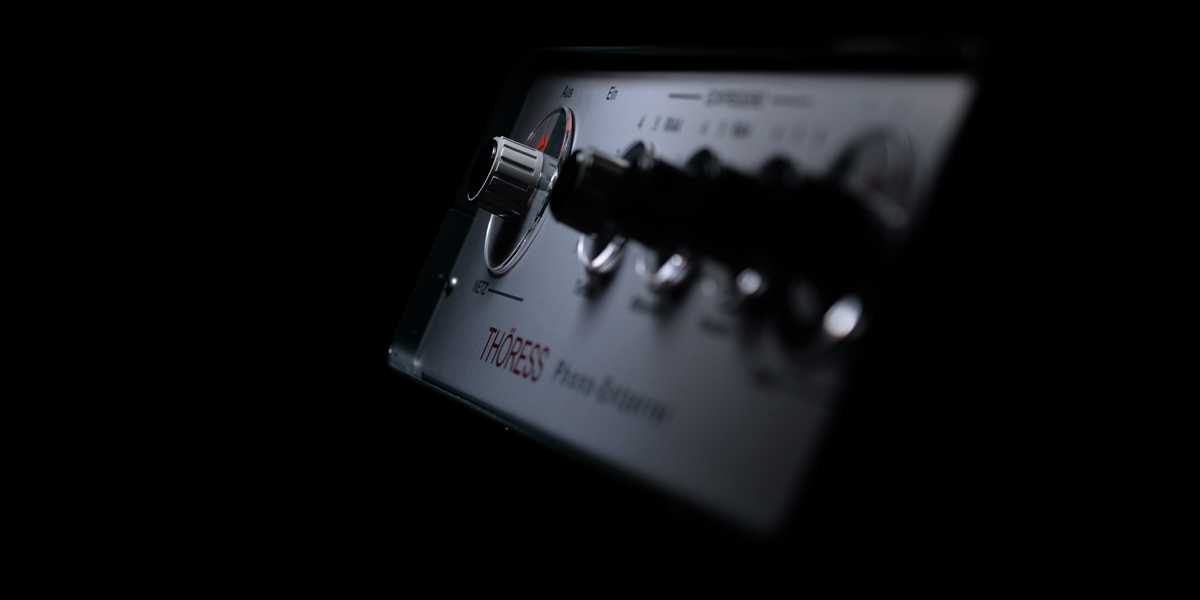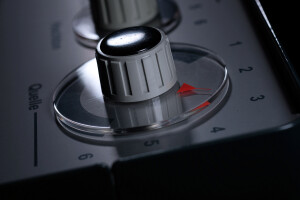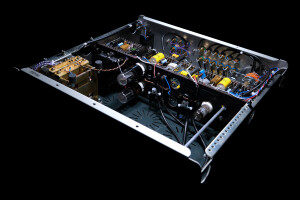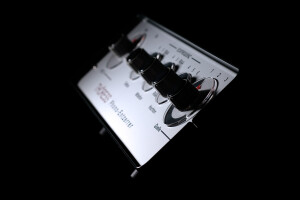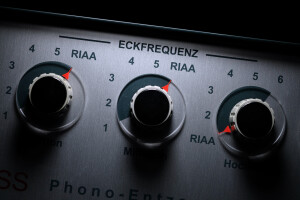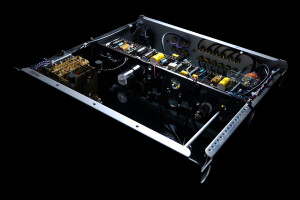It’s been on the market for quite a few years now, but as far as I know it’s never been reviewed before. I feel honored to be the first one to do it. Without further ado let me invite for the review of a tube phonostage from Germany, the Thöress Phono Enhancer.
Introduction
I have been a fan of vinyl records since I was a kid. My parents had only a simple machine, a record player with an in-build phonostage, amplifier and speaker (yes, one!) plus a bunch of heavily worn off records, mostly singles and so-called „music postcard”. In a hindsight, it must have sounded terrible, but these 40+ years ago I was delighted and got sucked in to the wonderful world of black (at least some of them were) records. As a teenager, after saving money for quite a long time I bought my first „real” turntable. My dad bought an amplifier and speakers and my life-long adventure with LPs started for good. Buying records back then in our country was quite a challenge and the available releases, at least most of them, didn’t offer particularly good quality, but it didn’t stop me. I just knew it was the way I wanted to listen to the music as it affected or touched me much more intensely than when played from silver discs.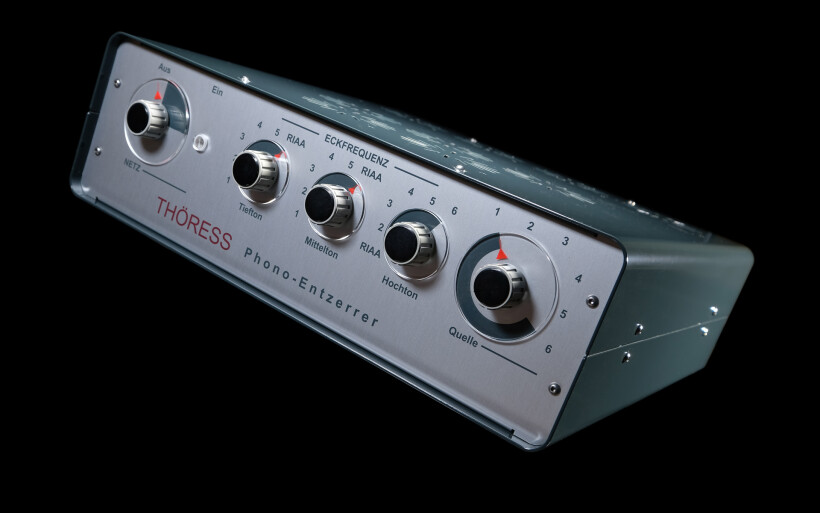
Fast forward another 15 years and I fell in love with the sound of tube devices, particularly Single Ended ones with triodes on board (SETs). It didn’t take long before a setup including a 300B SET and a decent turntable with MC cartridge I listened to in at my friend’s blew my mind. It was one of these rare moments of clarity in life – I was absolutely certain that (for me, obviously) this was the best possible way to experience music. And so I built my own setup with such and amplifier, a turntable as a source and with easy to drive, back-loaded horn speakers. And I was very happy for a few years. And then… I became a reviewer. To do that job one needs a different, more versatile setup. So horns had to go and while I couldn’t part with my modified Art Audio Symphony II 300B SET it became just an option to be used in rare reviews of easy-to-drive speakers and for even rarer times when I had time to listen to music for a pure pleasure. Turntables, though, have been a part of my rig from the very beginning and I finally settled on the fantastic J.Sikora Basic Max version with their own remarkable KV12 kevlar tonearm and currently still the amazing AirTight PC3 MC cartridge.
Another obligatory component in an analogue rig is a phonostage. Over more than 15 years of reviewing audio gear I had a chance to listen to some of the best phonostages from brands such as Kondo, Tenor Audio, AudioTekne, Ypsilon, Air Tight, Brinkmann just to name the few best and (unfortunately) most expensive ones. As you might have noticed somehow all of those brands, I’ve just named, that first came to my mind when I thought about the best of the best, specialize in tube or in hybrid designs. Does it mean that I am biased? Probably a bit, but it doesn’t mean that I don’t appreciate solid-state designs. You want proof? OK, I own two phonostages and both of them are solid-state ones. There is the GrandiNote Celio mk IV and the (in comparison) inexpensive, but also remarkably good ESE Lab Nibiru and I love them both. Why don’t I own a tube phonostage? The best ones are way too expensive for me, plain and simple.
But it doesn’t mean I am not on a constant lookout for one that would be within my reach while offering a unique performance close to that of the best devices I know. One item on the „maybe” list is the LampizatOr Vinyl MC1 – it might not be quite on par with Lukasz Fikus top phenomenal D/A converters, but it’s really, really good. It’s just so huge that I would have to replace my rack with a different one to fit it in. There is also the excellent, but already almost twice as expensive, Brinkmann Edison mk II (although, that’s actually a hybrid design). And… ever since I met Reinhard Thöress a few years back I’ve had my eyes and ears on his phonostage that impressed the hell out of me during several presentations I participated in.
Before we get to the subject of this review, the Thöress Phono Enhancer, lets take a step back for those who may not be very familiar with this brand. Hopefully at least some of our readers who read Dawid’s reviews (HERE and HERE) or one of mine in other magazines, or last but not least the INTERVIEW with the man himself that I highly recommend for you to read before continueing with this review, already know, this German brand is a fruit of a mind and true music passion of one man – Herr Reinhard Thöress. For more than 20 years he has specialized in development and production of tube devices – amplifiers, preamplifiers, phonostages, but also loudspeakers. If you still remember what I wrote before about my personal preferences you surely understand why I got attracted to the Thöress lineup.
A side note – brand’s name is Thöress as that’s the name of its founder but I should use it interchangeably with an international spelling, which is Thoeress. That should make things easier for non-German speaking Readers.
It’s really difficult to confuse his products, at least electronics, with any others, as our German designer created his own original, sort of vintage style that is easily recognizable in every model. As with any style you may love or hate it, but I doubt anyone could feel indifferent about it. It just stands out too much among other products. I belong to the fan group, although I have to admit, that it took me a while to get used to the appeal when I reviewed the first Thöress amplifier. But the fact also is, that when I sent it back I really missed it (not just for the looks, obviously).
One thing about Thoeress devices is this vintage/old-lab-vibe style, and the fact that Reinhard always uses German descriptions on his devices even though he’s been selling them all over the world, just adds to its exotic vibe. That’s also why this review should actually be titled: Thöress Phono-Entzerrer. But since most Readers and myself probably speak better English than Deutsch, so let’s stick to the Phono Enhancer instead. When few years back, while reviewing the first amplifier from this manufacturer, I did a tour on audio forums in several countries I was truly surprised because I didn’t expect to find some much feedback on Thöress components from users in so many corners of the Earth. The high acclaim though, especially after I listened to the amplifier in question (the Hybrid Triode Integrated) was not really a surprise. Most of the users (and me) shared what they liked about these devices – the vintage appeal, the simplicity of the external and internal design, the high quality of make & finish, and last but not least – a remarkable performance offered at, relatively to the high end market standards, attractive prices. The performance, I must add, that is not exactly typical when you think of tube devices. I shall get back to that later when discussing the performance.
One of the Thoeress products seemed particularly popular – the subject of this very review the Phono Enhancer – even though it had never been reviewed before. How did Reinhard achieve that? By a word of mouth, or whisper marketing, obviously. That’s doable but one has to offer a very special product, one that competes with others, highly reviewed and acclaimed ones, in terms of performance, features and make&finish quality. A bit of personal touch from a designer himself helps too. And if you ever met Reinhard during any of the shows you know what I’m talking about. Plus, many people simply look for products coming from small, boutique manufacturers, because more often than not, what they get is a very unique performer at reasonable price. Which is also the case when it comes to Thöress products. The fact, that the Enhancer is a very special performer was also my personal impression from several presentations so I knew I had to get my hands on it and give it a „test ride” in my own system. And here it finally is! Not only have I been given a long time to assess it but also also a chance to share my findings with you. So, let’s get to it.
Design & Features
Manufacturers of phonostages follow different approaches when developing their products. Some products are highly specialized – they support only MM or MC cartridges, offer one input and one output, no or limited settings, just one equalization curve – the RIAA, and so on. There are also those that are much more versatile offering a bunch of features and options. The Thöress Phono Enhancer, no doubts, belongs to the latter kind, although Reinhard did it his own way. Why? You can find out more about it in the aforementioned interview. In terms of the external design the Phono Enhancer is a typical Thoeress product with its grayish/greenish front with German writings and knobs that look like borrowed from some lab equipment and the dark green shell (top, bottom and sides). The sun or star shaped cut-outs on the top cover that allow for better ventilation are a nice touch. It features a purely active phono circuit – no step-up transformers – that uses three NOS (new-old-stock) tubes – one PCC88 and two 6J5GT. The whole circuit is hard-wired and much care has been taken in arranging each aspect of the internal construction to ensure the highest reliability, low-noise performance and ease of service.
On the rear panel one finds six (!) stereo RCA inputs (no XLRs). A standard version features five MC inputs and the sixth is an MM one. Fans of MM cartridges don’t have to worry – upon order these numbers may be reversed and you can purchase a unit with 5 MM inputs and one MC at your disposal. Five MC stereo inputs that’s plenty but in this case the number is related to specific impedance loading values. Plugging your phono cable from turntable/tonearm to specific input translates into choosing a specific loading. The corresponding standard loading values for inputs 1 to 5 are as follows: 100, 200, 300, 500 and 1000Ω. Some may see only five loading values as a limiting factor, but the practice proves that it should be more than enough no matter which pickup you have. Each of them offers the same gain of 65 dB which should be enough for almost any cartridge available on the market.
Input number 6 is the one reserved for MM pickups with its loading of 47kΩ and a gain of 45dB. The latter figure, for MM, is actually quite high. As it reads in the manual any of the MC inputs can be used with mono MC cartridges featuring a dual-coil generator. One can also use single coil mono MC cartridges – that’s what additional two single RCA inputs placed below the „regular inputs” are for. The procedure of connecting such pickups is nicely explained in the user’s manual. There are two grounding posts for connecting ground wires from tonearms, the on/off switch, EIC socket and a ground lifting switch. The latter might come handy should some hum appear.
Let’s move to the front. That’s what creates this „old-lab” vibe, at least for me – German descriptions and five quite particular knobs. The ones on the far left and far right (have nothing to do with politics) are quite common in terms of their functions. The former turns the device on and off, the latter allows user to choose one of six inputs. The three in the middle are what makes the Phono Enhancer quite special. You can find an option of using different equalization curves in many, particularly high-end, devices. Not that long ago I tested for the HighFidelity magazine the latest phonostage from the Japanese AirTight, model called ATE-3011. It’s a brilliant performer with, no surprise here considering the brand, tubes on board. One of it’s special features was the option of not only choosing one of five equalization curves but allowing user to operate this feature using two parameters (turnover and roll off) for each of them independently. That actually allows user to combine them in any way freely, in order to allow listener to find setting that sonically suits him best.
The Thöress Phono Enhancer has been on the market years before the AirTight was introduced and it’s been actually offering an even more versatile on-the-fly adjustment of the phono equalization curve characteristic. That’s what these three aforementioned knobs are for. You can leave them in default (clearly marked) positions to use a standard RIAA equalization and never even touch them – that’s your right and you wouldn’t be that wrong. Almost all vinyl records released after 1954 were prepared using the RIAA curve – that’s when it was established as industry’s standard. Yet, many collectors own records released before 1954 featuring one of many (there were more than a hundred at some point) other equalization curves. When played using RIAA either the performance is sub-optimal, or simply horrible. That’s why some phonostages feature few, most popular, curves to choose from. With the Thöress Phono Enhancer you can do even more. Each of the 3 rotary selectors features 6 positions/setting. Each of them selects edge frequencies (f1=bass roll-off), (f2=bass turnover) and (f3=treble roll-off) of the respective de-emphasis curve. I saw Reinhard more than once using them on regular RIAA records to find optimal/preferred sound. So on one hand using these three parameters one can choose many various curves, on the other one can treat them as sort of tone control (which it isn’t in a popular understanding of this term) even when listening to „standard” vinyls. And trust me, it can come quite handy particularly if you’re not listening only to some super-duper audiophile releases.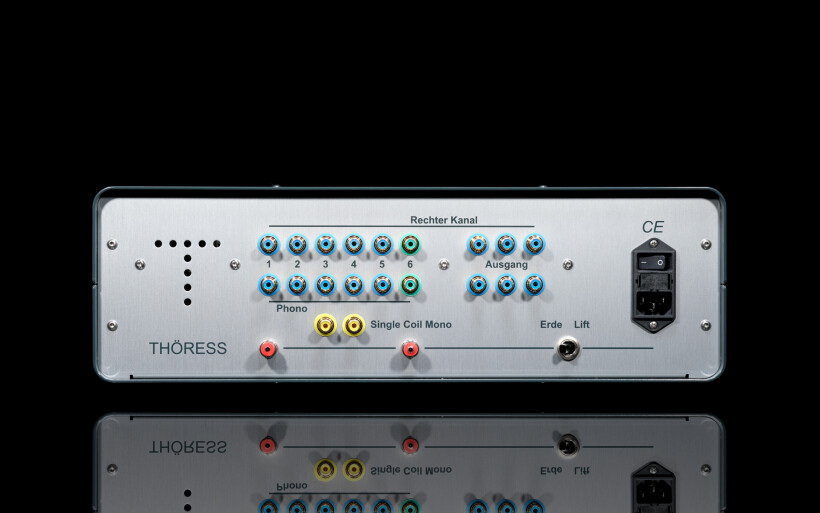
You can find a detailed manual with even more detailed information HERE 1c THÖRESS – Phono Enhancer – Manual
Sound
Reinhard and the Polish distributor, Audio Atelier, were kind enough to give me plenty of time to play around with the Phono Enhancer. And so I did using mostly my rig, but also some other turntables and cartridges that I reviewed in the meantime. Among them there was the surprisingly great sounding, direct drive Brinkmann Taurus with their own 12.1 tonearm and one of the three best cartridges I’d ever listened to in my system, the AirTight Opus 1. Another one was the VPI Prime Signature with their own tonearm and Lyra Etna, which in its class is also a kind of a wonder. Ultimately I tried to find common features of the performance that were always there, regardless of the drive/tonearm/cartridge combinations, and point them out for you so that you know what to expect should you decide to purchase this device.
All of the best phonostages I had a chance to evaluate in my system featured tubes, but none of them offered a performance that most people (based on stereotype) would call „typical” for tube gear. Sure they all benefited from numerous qualities of this „ancient” solution, but at the same time they mostly avoided its weaknesses. It was obvious after the first longer listening session with Thoeress that it is no different in this regard. It wasn’t really news to me after familiarizing myself with the performance of two Reinhard’s amplifiers, but still needed to be confirmed. After all, the Phono Enhancer could have been different. No, it wasn’t. None of Reinhard’s electronics I listened to so far, although build around tubes, sounded like a typical tube device.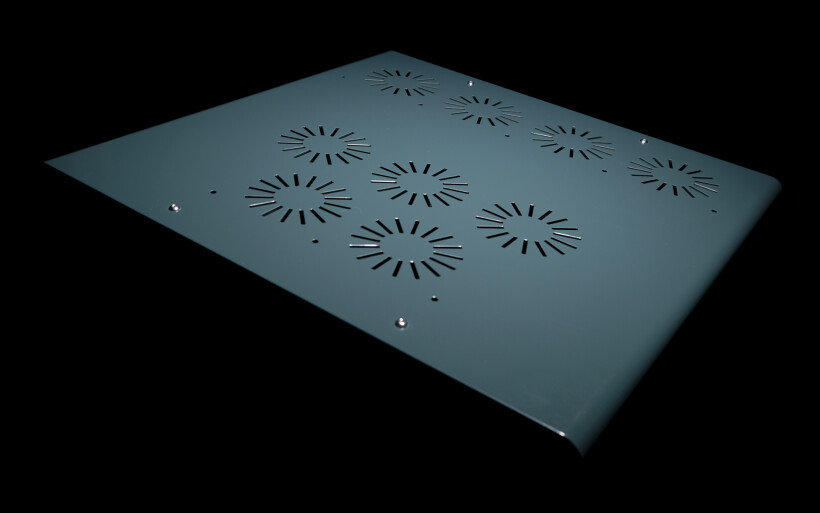
Let’s start with the fact that the Phono Enhancer is dead quiet. It’s not always the case with tube devices – some hum, grounding issues, in worst case scenarios, buzzing transformers, do happen more often than I would like them to. But in this particular case only when I pushed the volume way, way up when not playing music and while using highly sensitive speakers I did hear a bit of noise from up close. That’s not something that could influence listening experience in any way. So we can cross out this particular downside of some tube designs from the list for this phonostage. In real life conditions you won’t be able to tell the difference between any solid-state and this particular tube phonostage based on noise, as there is virtually none.
So we got this one out of the way. How about another sonic feature many believe can not be properly rendered using tube components – bass. While the Phono Enhancer doesn’t quite match the Tenor Audio Phono 1 in terms of the bass performance (particularly its ultimate power and energy at the deepest, lowest level) I am also still to hear any device to achieve that. But other than comparing it to the absolutely best, simply put reference (and crazy expensive) component, the Thöress stood its ground against any, tube or solid-state, competitor. The bass was really deep, visceral when needed, energetic, but also fast, taut, lively and the timing was perfect too, if only recording allowed it. The lower part of the band (as well as the rest, but we will get there in a moment) was very well differentiated, there was an abundance of details, also the low level ones, and textures which made, particularly (but not only) acoustic instruments, sound remarkably realistic.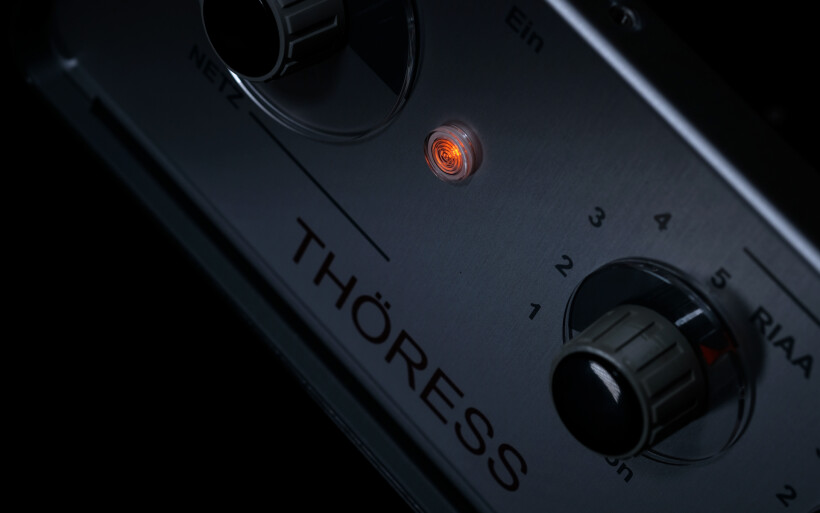
Focusing on the lower end of the band I couldn’t really find typical tube „softness” or „roundness” (as opposed to a tendency of many solid-state phonos that can make bass sound, unnecessarily, „harder” than it should be). I am not talking about extreme examples of poorly sounding tube components that sound sluggish, but rather about those good and very good ones, that are still a bit soft and round in the bass area whether they play acoustic bass (which is usually fine) or electric one (which shouldn’t be soft or round and if it is, it’s a result of an unwanted coloration). The Phono Enhancer simply isn’t. Soft and round, I mean. Unless a recording tells it to be. But it does not add any of that just because there are valves on board. It didn’t really matter whether I listened to some older or contemporary recordings – it behaved the same way, always focusing on high fidelity. So what actually mattered was how good the performance was and how well was it captured on tape (or in file), and later mastered, produced and pressed. And read by a stylus from the groove, obviously. Because Thoeress does differentiate records really well, sometimes even painfully well, when you want to listen to some mediocre quality vinyl record and the German phonostage doesn’t make it any easier.
How deep the Phono Enhancer was able to go with the bass became obvious when I listened to acoustic bass, either on older records by, say, Ray Brown Trio („Soular energy”), or Stanley Clarke („School days”) or recently recorded, such as Oleś Brothers „Spirit of Nadir” and „Komeda ahead” (recorded with Christopher Dell). I simply love this instrument so I’m pretty demanding when it comes to playing it through any audio system. Only when I can hear proper proportions between strings and wood, fast transients, nice sustain and long decay, a full, rich spectrum of tones and textures, the deepest notes having proper weight, I feel truly satisfied. And that was exactly the case with Thöress. I ended up searching my library for records with acoustic bass presence and played them all day long enjoying the rich, well-textured, dynamic performances of many masters of this remarkable instrument.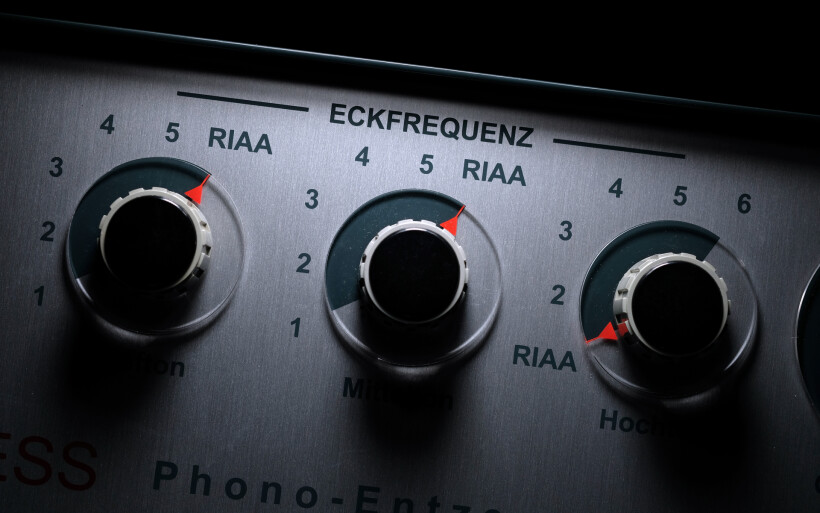
I knew I couldn’t base my whole review just on a double bass performance, no matter how good it sounded like with the Phono Enhancer so at some point I took a huge leap and shifted to… electric bass :). First, by cueing in the Miles Davis’s „TUTU” that features the one and only Marcus Miller on his electric bass guitar. While acoustic bass is more colorful and richer tonally, an electric guitar is a more visceral type of instrument, it needs more speed and proper slam. And with the Phono Enhancer I did feel the lowest, bone-shaking notes delivered with immediacy and power that are often beyond tube phonostages reach. While the double bass sounded (naturally) a bit softer, the electric bass guitar was tighter, tauter, faster – more attack and less decay – the Thoeress phono had no problem at all to keep up with its inherent character and presented it in a amazingly pure, transparent and somewhat elegant way. It was also the case with impressive drum performance of Chad Wackerman on his „Dreams Nightmares and Improvisations”. I actually played it via my 300B SET amplifier and it still sounded damn fast, taut, and with proper kick which speaks to Thöress ability to convey the agility and power of truly well recorded drums.
The same album strongly indicated another of the Thöress Phono Enhancer’s qualities – treble/upper midrange presentation. Because it wasn’t just the drums that sounded so damn good, so were the cymbals. And that’s, with all due respect to all solid-state designers and fans, a domain of tubes (in my humble opinion, obviously). The combination of sheer power of sticks hitting metal cymbals with vibrancy and immediacy of cymbals’ response, the spaciousness and openness of their sound followed by a beautiful decay, a sort of delicacy in all of that, that is an inherent feature of tubes, plus the Thoeress’ ability to present it all in such a realistic, convincing and again, visceral way, translated into remarkably impressive performance. One that forced me to push the volume way up and stay at this level because there were no negative effects of playing drums really loud. There was no compression, no distortion – just pure power and a lot of fun.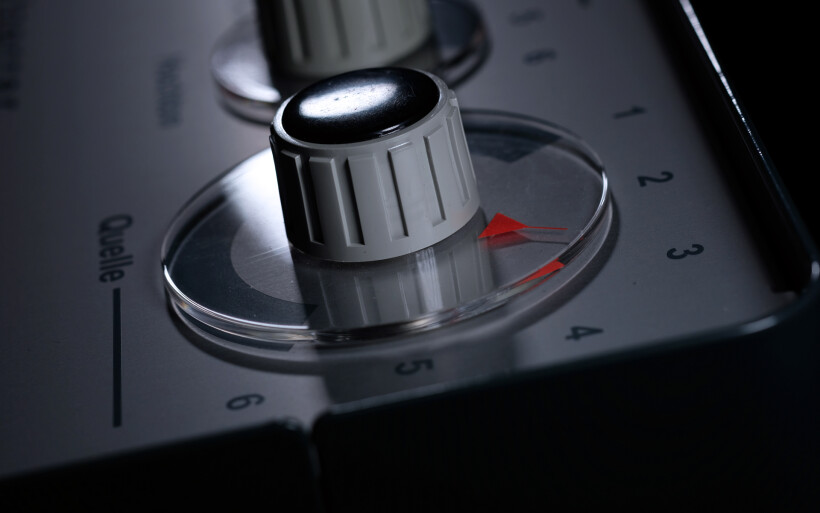
While Reinhard, generally speaking, does not build soft/warm sounding tube devices, all of them still do preserve what’s best of the tube sound – unmistakable naturalness of the sound, lack of edginess, harshness, anything that would sound artificial. So while there were sparks dancing on these cymbals and in the air surrounding them, their sound never got too bright or too aggressive. It was never only about making the attack phase impressive (although it definitely was!), about its sheer power but also about long decay, excellent differentiation, and so on. Or in other words, about the performance sounding as if I was listening to the drums, not the recording, also because an intensity of the sound was similar. OK, that’s a slight exaggeration, as the recording, no matter the system it is played on, never sounds the same (or as good) as live music, but with the Phono Enhancer it got as close as I remember it from the very best, way more expensive phonostages.
I found another outstanding, convincing, sounding so realistic drummer’s performance on Blicher Hemmer Gadd album. Steve Gadd belongs to the the best ones there are, and the Phono Enhancer made sure I knew it instantly. Thöress belongs among those phonostages that let you follow a chosen performer/instrument and study deepest layers, inner-details of each good recording. If that’s your objective, it won’t even require much effort. On the other hand, it’s not one of those over-analytical components that, while offering great insight to recording, loose track of the performance as a whole and of the flow of the music. The Thöress offers you a choice. You decide whether you want to analyze, say, newly purchased record in terms of its quality or just sit back, relax and enjoy the music. That’s a feature that is a must when it comes to the best audio components and no doubts, the Phono Enhancer belong to that group. I am also pretty sure that if you upgrade your rig replacing some other phonostage with Phono Enhancer you will re-discover many of your records finding some elements, details in them, that you never even thought were there. That’s how revealing, while sounding so natural, this German phonostage is.
I’m not an overly analytical type of listener, as I prefer to simply enjoy the music and/or the performance of my favorite musicians. With Thöress in my system all I had to do was to lower the stylus into the groove, sit back and relax. Which is not to say, that it didn’t keep me on the edge of the seat when conveying some particularly emotional, expressive performances. Or when surprising me with those new discoveries now found on well-known records. I would even go so far and say that it is the Phono Enhancer’s forte – gripping listener’s attention, immersing them into to the world of music and never ever leaving them indifferent. You should be ready for that – there is no background playback with Thoeress. Not unless you play some really boring music. But in any other case it will grip or seduce you towards whatever is happening on the stage. And that’s one of the features that I, as a rather music lover than an audiophile, appreciated about it the most.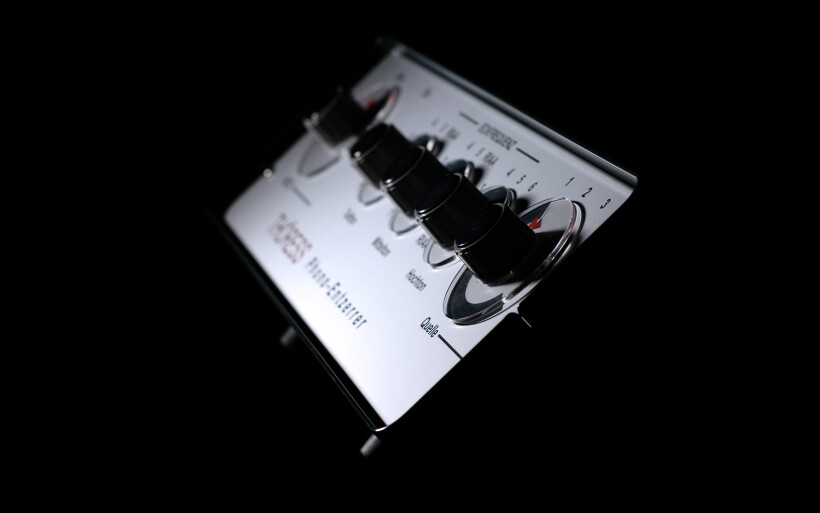
The Phono Enhancer is a very transparent, pure sounding device and it doesn’t really force an overlay of some tube signature on every record. It was absolutely clear to me as soon as I lowered the stylus into the groove of recently released double album of Paco and John „Live at Montreux 1987”. Everybody knows the „Friday night in San Francisco” that was released numerous times by various labels (including MoFi, Philips, and recently Impex) and both the music and the recording are fabulous, no doubts about it. This time, however, to listen to my favorite guitars I decided to go for the newly purchased item. I’d listened to it 2-3 times before, using my own phonostage, hence I already knew that the sound on this record is a bit on a brighter side than that on the „Friday night…”. Not to an excess but simply not so rich, with more focus on strings, less on the wood and strings sounding more metal, if you know hat I mean. Thöress didn’t change a thing about it. It made sure the sound didn’t get too bright while boldly exploring a plethora of information dug out from the groove. It built a detailed, precise, beautifully spacious and vigorous spectacle. But… still a bit bright because of no attempt to „tube-it-out”, so to speak, on Phono Enhancer’s part.
And that’s where the three knobs came in, or at least one of them in this particular case. All I had to do was to move the one responsible for midrange one step down from „RIAA” position. As a result this hint of brightness was almost completely gone and wasn’t bothering me anymore. This handy feature of reviewed phonostage did an even better job when I listened to another slightly too bright (for my taste) recording, the R.E.M.’s „Automatic for the people”. In this case the upper midrange seemed not just bright but even a bit „harsh” to me, but the same tiny change of settings solved most of this issue making listening to this non-audiophile, but otherwise quite good release, much more enjoyable. I also reached for the U2’s „Rattle and hum”. I have an old, slightly worn off release, that, like most U2 records, while containing fantastic music, doesn’t offer a particularly good sound, at least in audiophile’s terms. But… a minute spent playing around with, this time, mostly bass and midrange knobs, and for the first time in a long time, I listened to this release from the first, till the very last note. And enjoyed it! I mean I love the band and their music as much as I hate most releases because of poor sound quality. The Phono Enhancer definitely enhanced the sound of this record, made it bit, but enough, better to remind me how much fun this band’s music can provide.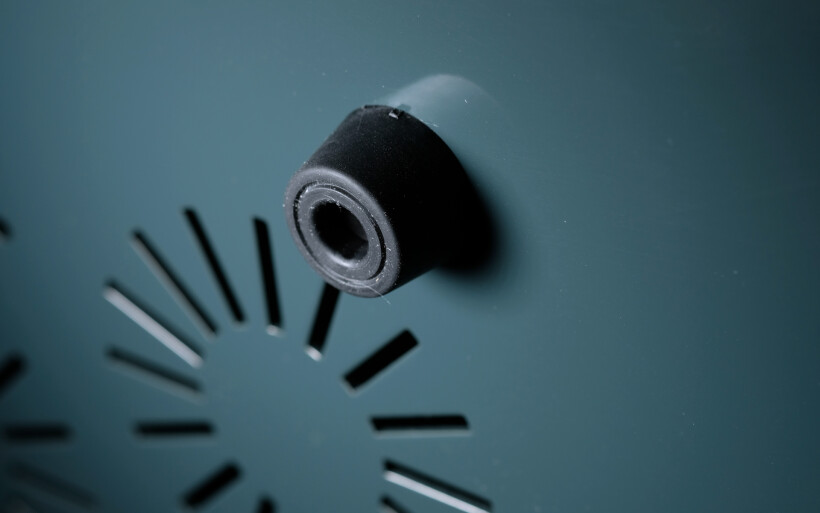
Most (good) tube phonostages I know deliver incredibly spacious, three-dimensional, palpable sound. The Thöress Phono Enhancer is, in most part, no exception from this rule. Feed it with a recording such as, e.g., Michel Godard’s „Soyeusement Live in Noirlac” brilliantly prepared and released by Sommelier du son, and you’ll be immediately transported to the said Noirlac Abbey in France. And you better be ready for a real treat as you will find yourselves in the middle of a huge, semi-open space, filled with air and music played on (some) period instruments resonating from walls in a far, far distance. With this record played by Thoeress the impression, or even the experience of the huge space in front of me was truly unique. Some other tube devices (Kondo, AudioTekne) did an even better job rendering three-dimensional, palpable phantom images, but the space itself, its dimensions as delivered by the Phono Enhancer, were at least on par with the very best competitors.
If, on the other hand, you want to find out how silky smooth, sweet, incredibly rich and nuanced and yet crisp, vibrant and open a violin can sound like with Thöress, cue in, e.g., the „Tube only violin” album released by Tacet. The title is self-explanatory – while recording the album only tube devices were used, and you can hear it listening to this record. The Phono Enhancer, fully tubed, yet not typically tube-like sounding device, delivered its unique sonic signature in spades. The sweetness of violin’s strings, the absolutely beautiful timbre, texture, the natural flow of music – it was all there delivered in astonishingly immersive way. The way violin was recorded makes the music really flow, the performance is effortless and superb in every of its aspects. The Phono Enhancer proved capable of delivering it in an equally effortless, fluid way. It’s, simply put, a remarkable performer.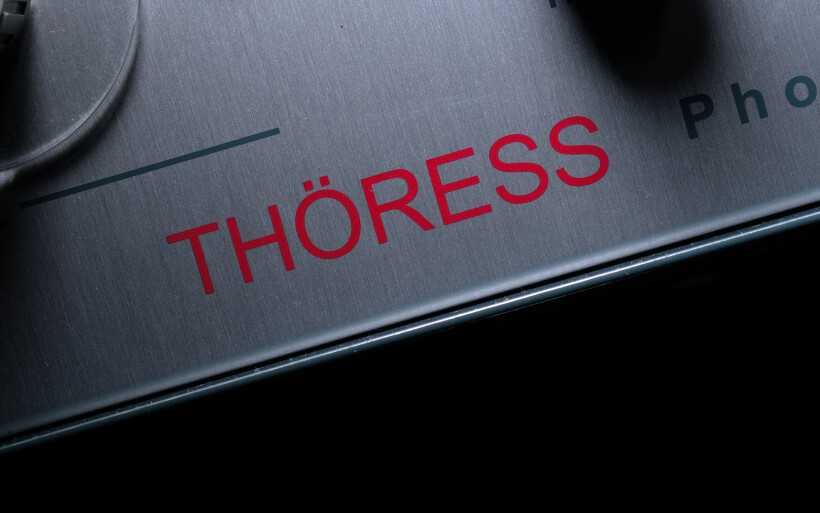
Summary
I bet that if you got that far into my review you know already that I appreciated and loved the Thöress Phono Enhancer in a way, that I’d loved only a handful of the best of the best phonostages before. All of them are way more expensive and far beyond my (financial) reach. I won’t keep the reviewed unit right away only because for the moment I can’t spare the asking price, but it doesn’t mean it’s not worth it. It definitely is and more! I can’t foresee the future, but it’s a fair guess that the Thöress Phono Enhancer will some day become a part of my reference system. I think that it is the best recommendation you could get from me. Yet, as always, don’t take my word for it, go ahead and try it yourself. I can promise it won’t disappoint.
Features & Specifications (according to the manufacturer):
- Highly versatile vacuum tube phono preamplifier.
- MC gain with state-of-the-art signal-to-noise-performance in purely active operation mode (without step-up transformers).
- Minimalist non-balanced zero-feedback schematic with passive deemphasis installation.
- Unique contemporary vacuum tube schematic employing (2x6J5GT+1xPCC88) vacuum tubes.
- All edge frequencies of the equalizing characteristic independently on-the-fly adjustable within wide limits by means of three 6-position rotary selectors.
- Subtle but highly effective tone control facilities for restoring eventual tonal imperfections of the vinyl program; implemented without the aid of clumsy, sound-degrading conventional tone control circuitry.
- Entire range of phono equalization characteristics used by the prominent record labels throughout history can be activated by choosing appropriate selector settings. Equalization settings suitable for 78-rpm playback included.
- Highly accurate RIAA equalization with selectors in default positions.
- Real-to-reap tape NAB and IEC equalization settings can be installed on aside the phono settings on request.
- 6 inputs with phono gain pattern (5xMC+1xMM). Alternatively, a gain pattern (1xMC+5xMM) can be implemented on request.
- Cartridge load preset on standard units with (5xMC+1xMM) gain pattern is (100, 200, 300, 500, 1000; 47K). Other load values can be installed on demand.
- 3 outputs (RCA terminals) with very low output resistance.
- Full hand construction; point-to-point wiring throughout.
- Deadly quiet power transformer produced in-house to the highest possible standards.
- Mains voltages: 230Vac, 115Vac via jumper setting; customizable for 100Vac (Japan), 220Vac (South-Korea, Thailand, China ML, Russia, Indonesia) and 245Vac (Australia).
- Nonmagnetic aluminum casework; front and rear panel with anodized printing; powder coated lids.
- Amplifier dimensions: 434x434x154 mm, 154=134+footers/20.
- Dimensions of the shipping box: 650x550x350 mm; weight 10Kg.
Price (when reviewed):
- Thöress Phono Enhancer: 9.300 EUR
Manufacturer: THOERESS
Associated equipment:
- Analogue front end: J.Sikora Standard MAX turntable, J.Sikora KV12 tonearm, AirTight PC-3, phonostages: Grandinote Celio mk IV, ESE Lab Nibiru V 5.
- Digital source: a passive, custom PC with WIN10, Roon, Fidelizer Pro 7.10, JCat USB Femto card with iFi power supply, Hdplex linear power supply for PC, JCAT USB Isolator
- D/A Converter: LampizatOr Pacific +Ideon Audio 3R Master Time (USB signal regenerator)
- Power amplifier: Art Audio Symphony II (modified), GrandiNote Shinai, LampizatOr Metamorphosis
- Preamplifier: Audia Flight FLS1
- Loudspeakers: GrandiNote MACH4, Ubiq Audio Model ONE Duelund Edition.
- Interconnects: Hijiri Million, Less Loss Anchorwave, TelluriumQ Ultra Black, KBL Sound Zodiac XLR, TelluriumQ Silver Diamond USB
- Speaker cables: LessLoss Anchorwave
- Power cables: LessLoss DFPC Signature, Gigawatt LC-3
- Power: Gigawatt PF-2 MK2 and Gigawatt PC-3 SE Evo+; a custom power line with Gigawatt LC-Y in-wall cable; Gigawatt G-044 Schuko and Furutech FT-SWS-D (R)
- Racks: Base VI, Rogoz Audio 3RP3/BBS
- Anti-vibration accessories: ROGOZ-AUDIO SMO40 and CPPB16 platforms and ROGOZ AUDIO BW40MKII feet, Franc Accessories Ceramic Disc Slim Feet and Wood Block Platform


